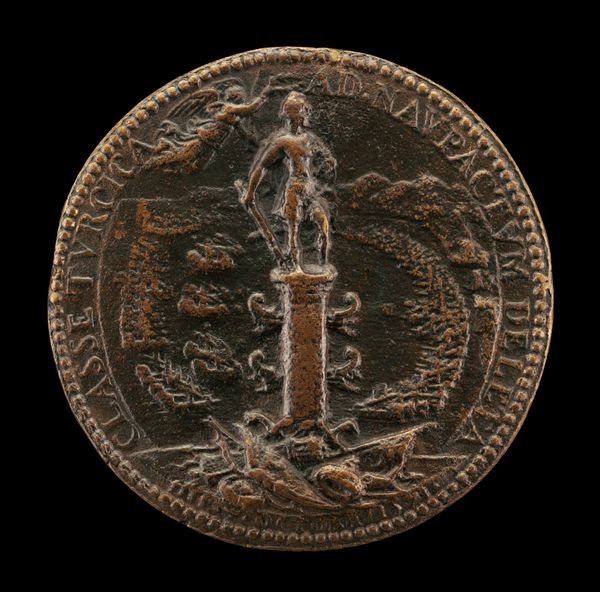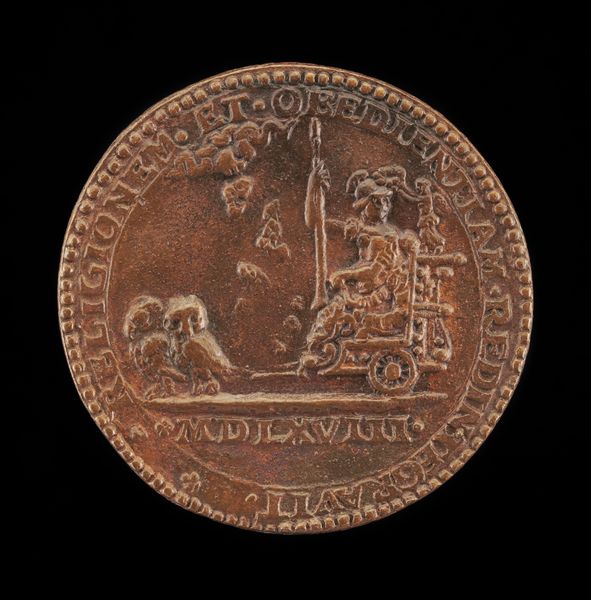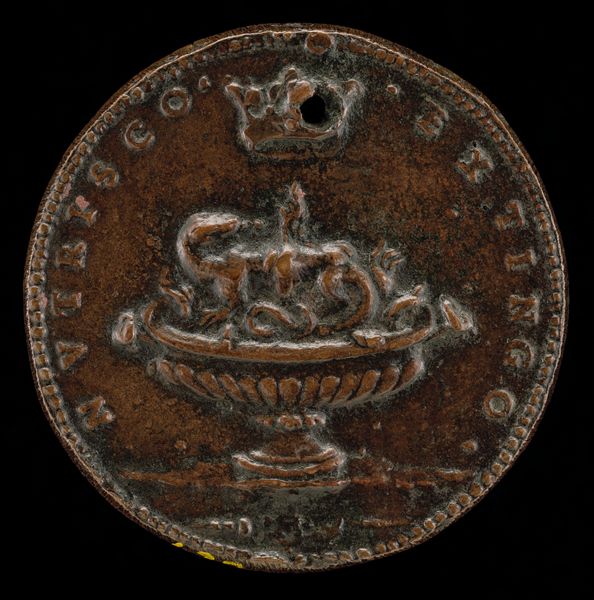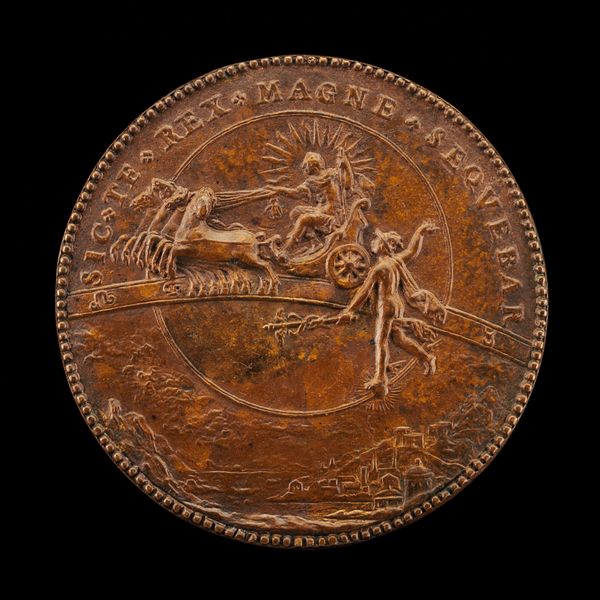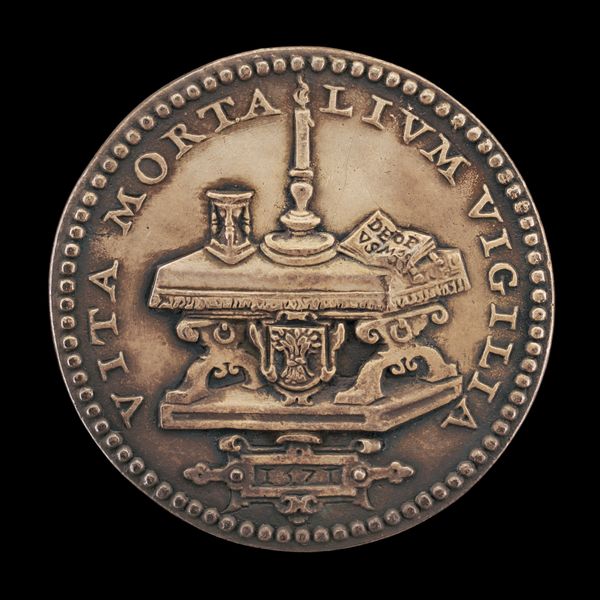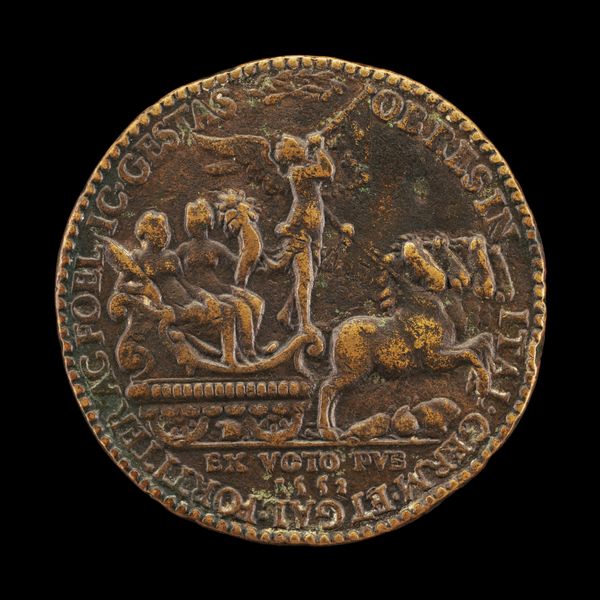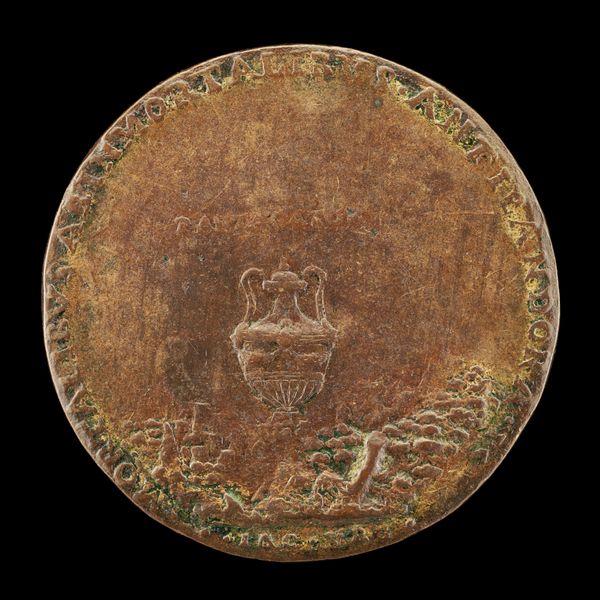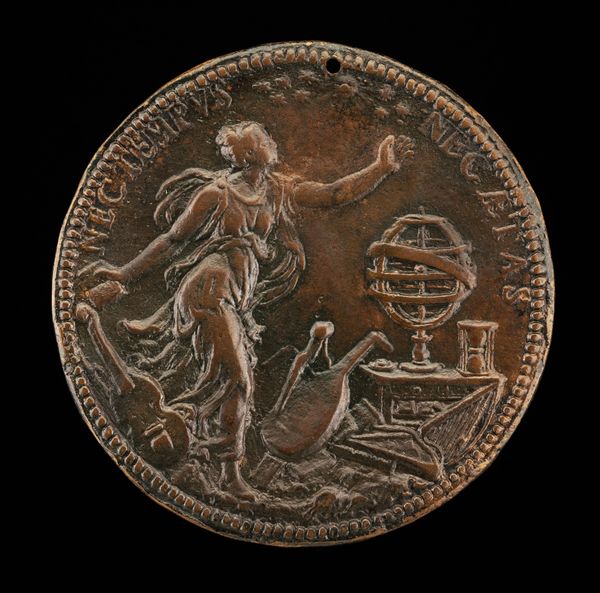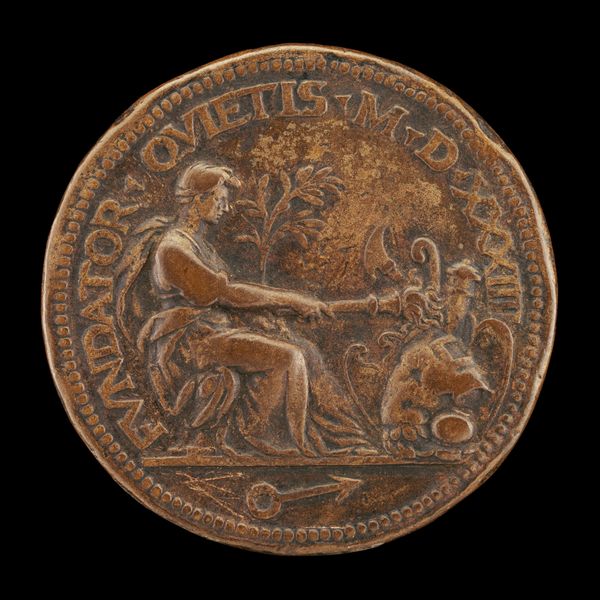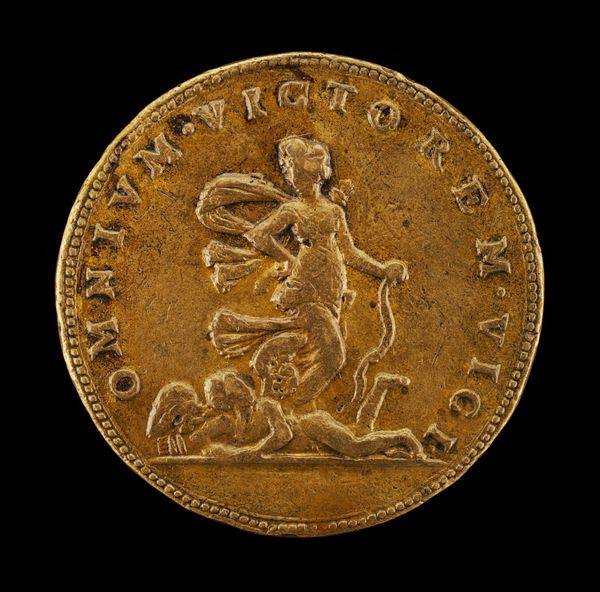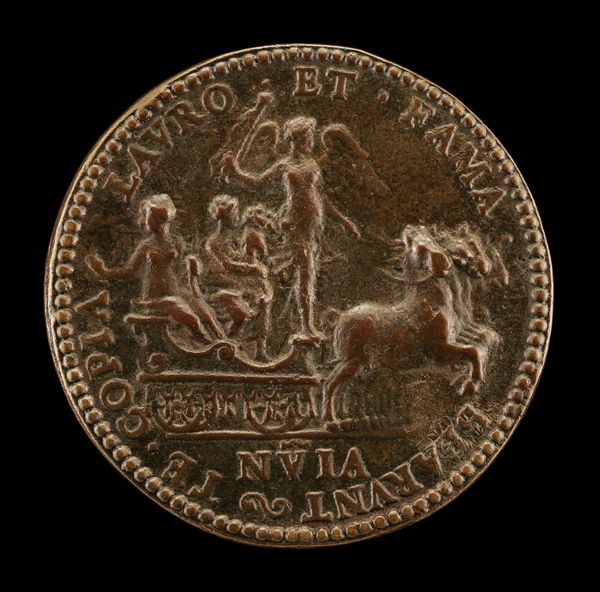![Candle, Hourglass, and Book on a Table [reverse] by Jacques Jonghelinck](/_next/image?url=https%3A%2F%2Fd2w8kbdekdi1gv.cloudfront.net%2FeyJidWNrZXQiOiAiYXJ0ZXJhLWltYWdlcy1idWNrZXQiLCAia2V5IjogImFydHdvcmtzLzY2NWM2MGY0LTkxNzYtNDk3OC1iYTc3LWI2ODI1YmY3YTMzYS82NjVjNjBmNC05MTc2LTQ5NzgtYmE3Ny1iNjgyNWJmN2EzM2FfZnVsbC5qcGciLCAiZWRpdHMiOiB7InJlc2l6ZSI6IHsid2lkdGgiOiAxOTIwLCAiaGVpZ2h0IjogMTkyMCwgImZpdCI6ICJpbnNpZGUifX19&w=3840&q=75)
relief, bronze, sculpture
#
portrait
#
medal
#
sculpture
#
relief
#
bronze
#
mannerism
#
11_renaissance
#
vanitas
#
sculpture
Dimensions: overall (diameter): 5.15 cm (2 in.) gross weight: 27.59 gr (0.061 lb.) axis: 12:00
Copyright: National Gallery of Art: CC0 1.0
This bronze medal depicting a candle, hourglass, and book on a table was crafted by Jacques Jonghelinck in the late 16th century. It encapsulates a potent message about life's transience, deeply resonant in an era marked by religious strife and the ever-present specter of disease. The imagery suggests the fleeting nature of time, the light of knowledge, and the inevitability of mortality. Made in the Netherlands, the medal reflects the cultural and intellectual milieu of the time, when humanist thought and religious contemplation intertwined. The intricate details, such as the lion's paw feet on the table, are visual signifiers, which tell us about the status of the patron and Jonghelinck's ability as an artist. To truly understand this piece, we need to examine the social and political context of the Dutch Renaissance. We can look at the history of Netherlandish medal making, the intellectual history of the period, and the cultural significance of memento mori imagery. It reminds us that the meaning of art is contingent on its social and institutional context.
Comments
No comments
Be the first to comment and join the conversation on the ultimate creative platform.
